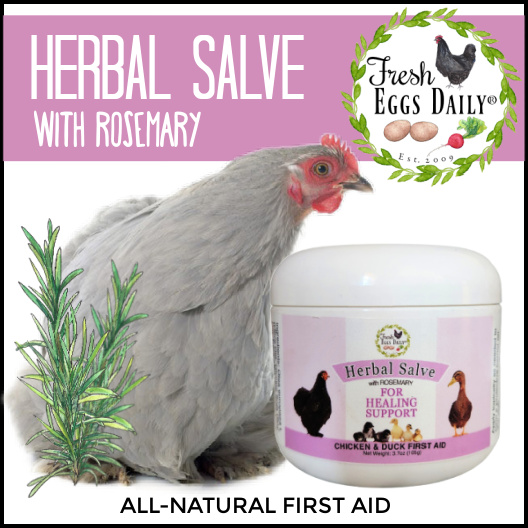What are Fairy Eggs and Why Do Chickens Lay Them?
Every once in awhile you will likely stumble across a teeny tiny egg in one of the nesting boxes.
No, a wild bird didn't sneak in and lay it! Your hens are just slacking.
Fairy Egg | An Egg by Any Other Name...
If you raise chickens long enough, you'll most likely eventually put her hand into a nesting box expecting to pull out a full-sized egg, but instead encounter a tiny not-much-larger-than-a-marble thing that sort of looks like an egg.
Don't worry! It's just a fairy egg.
Fairy eggs are often referred to by various other names including:
- wind eggs
- witch eggs
- cock eggs
- fart eggs (I know, pretty crass!)
Fairy eggs are merely a glitch in the laying process that is fairly common in backyard flocks.
They're a fraction of the size of a regular egg and generally don't contain a yolk - just the egg white. I've seen fairy eggs as small as a marble or as large as a ping pong ball.
What are Fairy Eggs and Why Do Chickens Lay Them?
Smaller than regular eggs, usually rounder, and containing only egg white within the shell, fairy eggs generally occur either very early in a hen's productive life before her hormones and reproductive cycle are fully formed and working properly.
Alternatively, sometimes very late in a hen's laying life she will lay a few fairy eggs as her hormone production is winding down.
Fairy eggs can also be the result of stress or a disruption of routine.
And sometimes they are just a simple glitch in production. By accident, a yolk isn't released in time and the eggshell forms around just the egg white.
Regardless, they are nothing to worry about.
Common reasons why a hen will lay a fairy egg:
- very new layer with immature reproductive system
- older layer who is beginning to enter "henopause"
- stress
- change in routine
- glitch in production
What's in a Name?
These miniature eggs have had several names through the ages.
In the Middle Ages, they were called "cock" eggs and were believed to be laid by roosters. Sometimes they were called "witch" eggs which were believed to be the work of the devil. (I'm pretty sure things didn't end well for those hens back then!)
In Scotland and other European countries, the eggs are usually referred to as "wind" eggs.
Here in the United States, they're often referred to as "fairy eggs" by little girls and "fart" eggs by little boys.
Well, truth be told, the moniker "fart" eggs is a more recent name for these tiny eggs. But I far prefer the slightly classier title of "fairy" eggs which has been used in the United States since Victorian times.
Color, Size and Shape of Fairy Eggs
Fairy eggs can be as small as a grape or marble, but are often as large as a ping pong ball, and are usually a bit more rounded than a normal egg.
Often fairy eggs are darker and more vibrant in color than other eggs laid by that hen because there's so much less eggshell surface area that needs to be covered by the pigment particular to that specific breed.
So more pigment over less eggshell = a darker colored egg.
And sometimes the smaller eggs get an extra dose of dye as a result of a slower journey down the oviduct.
Why Do Chickens Lay Fairy Eggs?
Fairy eggs occur when the hen's body begins to form an egg before a yolk is released from her oviduct. Therefore, only the white (albumen) is encased inside the shell.
Young layers are notorious for laying them, although I've had many, many pullets start laying normal-sized eggs right from the start, instead of starting with the tiny ones and gradually working up from there.
Either way, a few fairy eggs are nothing to worry about. They're just a blip in early production.
Consider them prototypes! Some hens never lay the miniature versions, while others will lay you a few fairy eggs early in their "career".
Can Fairy Eggs be Eaten?
Despite the lack of a yolk, fairy eggs are perfectly edible.
However, since the majority of nutrition is in the yolk and the eggs are so small to begin with, instead of eating them, I love to simply rinse off the eggs to remove the bloom which prevents air from penetrating the shell.
Then I let them air dry until the white inside has dried up and is rattling around inside. Then the eggs can be used as kitchen decor indefinitely. You don't even need to worry about blowing out the contents inside.
Although....according to superstition, in order to protect against the evils of a cock egg, one should throw it over the roof of the house and let it smash on the ground on the other side.
































